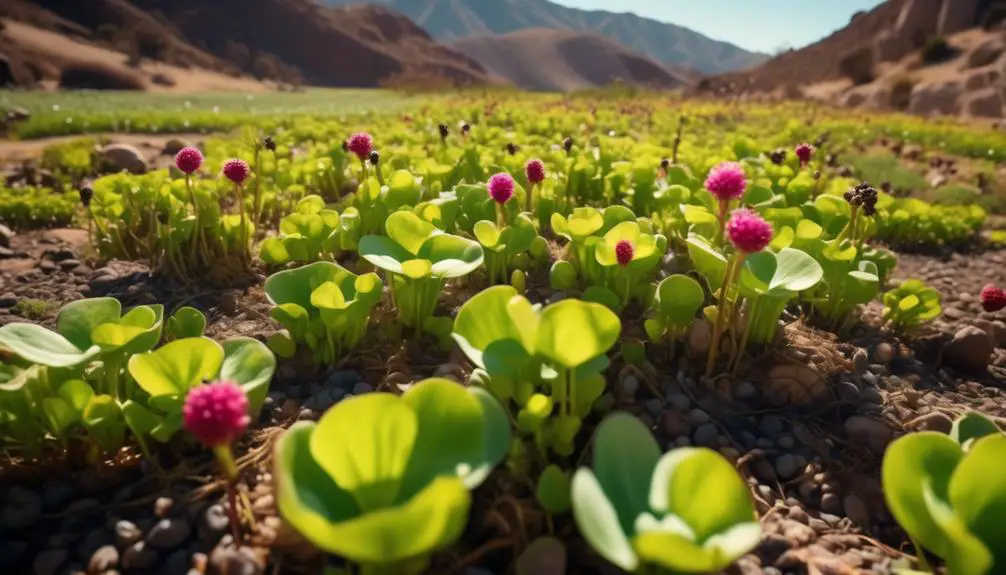Imagine walking through the lush landscapes of California, feeling the warmth of the sun on your skin and the gentle breeze in your hair. As you wander, a thought crosses your mind: what if you could find sustenance and flavor right here, amidst this natural beauty?
Well, my friend, let me tell you that the answer lies in the wild edible plants that thrive in this diverse state. From delicate flowers to hearty roots, from tangy berries to aromatic herbs, California has a bounty of edible treasures waiting to be discovered.
But the journey doesn’t end with simply finding these plants; it’s equally important to know how to identify and prepare them safely. So, let’s embark on this exploration together, shall we?
Common Edible Plants of California
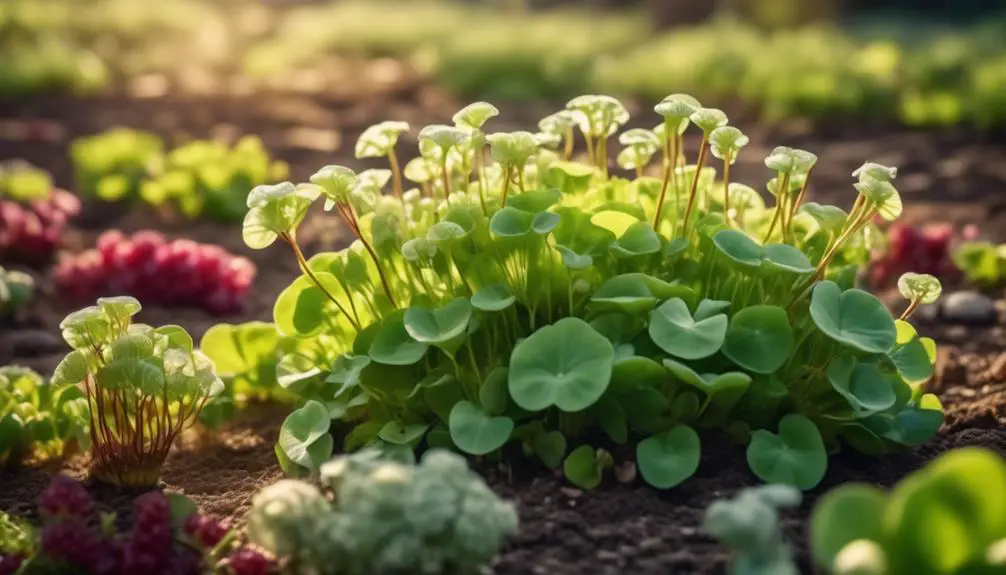
Common edible plants of California include monkey flower, sow thistle, chickweed, miners lettuce, and clover. These plants are just a few examples of the diverse range of edible vegetation found in California.
Another common edible plant in California is the California Bay. The California Bay, also known as Umbellularia californica, is a native plant that can be found throughout the state. It’s a tree that can grow up to 100 feet tall and is known for its aromatic leaves. The leaves of the California Bay can be used in cooking to add a unique flavor to dishes. They have a strong, spicy aroma and taste that’s reminiscent of bay leaves.
In addition to its culinary uses, the California Bay also has medicinal properties. It has been used by Native Americans for centuries to treat various ailments, including stomachaches, colds, and headaches. The leaves can be made into a tea or used topically as a poultice.
When foraging for edible plants in California, it’s important to properly identify the plants before consuming them. Some plants may have toxic parts or can be harmful if not prepared correctly. It’s always best to do thorough research or consult with an expert before consuming any wild plant.
Nutritious Wild Greens in California

To incorporate nutrient-dense wild greens into your diet in California, you can explore a variety of options rich in essential vitamins and minerals. One such option is miner’s lettuce, a popular choice among foragers.
Miner’s lettuce, also known as Claytonia perfoliata, is a leafy green native to California. It gets its name from the miners who used to consume it to prevent scurvy during the Gold Rush. It isn’t only a nutritious plant but also a tasty addition to salads and other dishes.
Miner’s lettuce is a good source of vitamins A and C, as well as iron and potassium. It has a mild, slightly tangy flavor, making it a versatile ingredient in various recipes. You can enjoy it raw in salads or use it as a substitute for spinach or lettuce in cooked dishes. You can also blend it into smoothies or add it to your favorite green juice for an extra nutritional boost.
In addition to miner’s lettuce, other wild greens like chickweed, monkey flower, sow thistle, and clover are also abundant in California. These greens offer a range of flavors and textures, and they’re all packed with vitamins and minerals. Incorporating these nutrient-dense wild greens into your diet can’t only diversify your meals but also provide you with essential nutrients for optimal health.
Fruity Delights of the California Wilderness
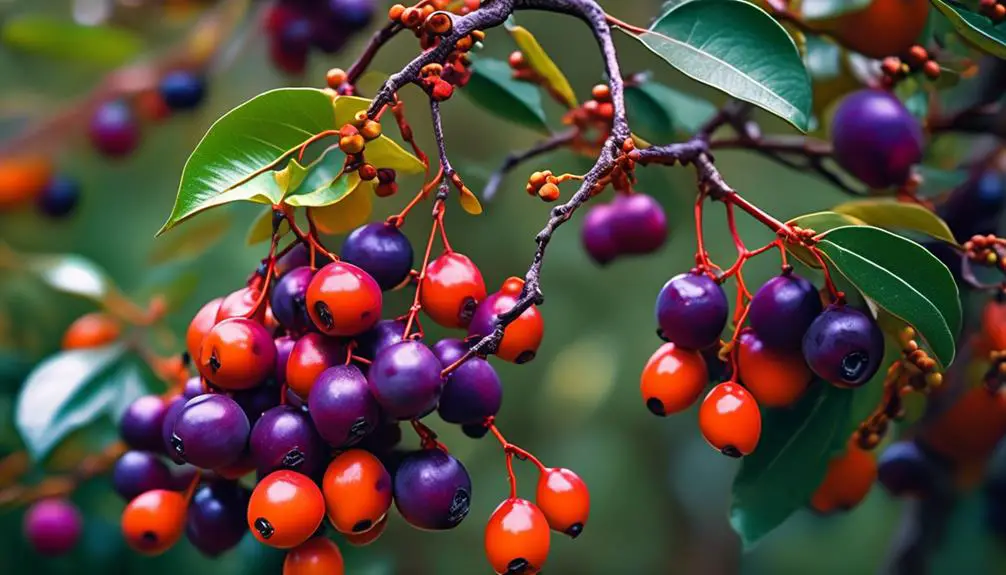
After exploring the nutritious wild greens of California, it’s time to indulge in the fruity delights of the California wilderness. The Golden State offers a variety of edible plants that will satisfy your sweet tooth. Wild currants, passion fruit, gooseberries, figs, and lemonade berries are just a few of the options available. These fruits not only taste delicious but also provide essential nutrients for your body.
When it comes to edible plants in California, you have plenty of choices. The Rogers Red grape, golden currant, huckleberry, barberry, and woodland strawberry are all great options for a sweet and tasty treat. These fruits can be enjoyed right from the vine or used in various culinary creations.
If you’re looking for alternative grains and flours, consider the big saltbush and honey mesquite. These plants offer gluten-free and sustainable options for your dietary needs. They can be used in baking or as substitutes for traditional grains, adding a unique and flavorful twist to your dishes.
To learn more about these edible plants and how to incorporate them into your diet, the California Native Plant Society (CNPS) is a valuable resource. They provide information and support for gardening with native plants, including those that are edible.
Foraging for California’s Wild Mushrooms
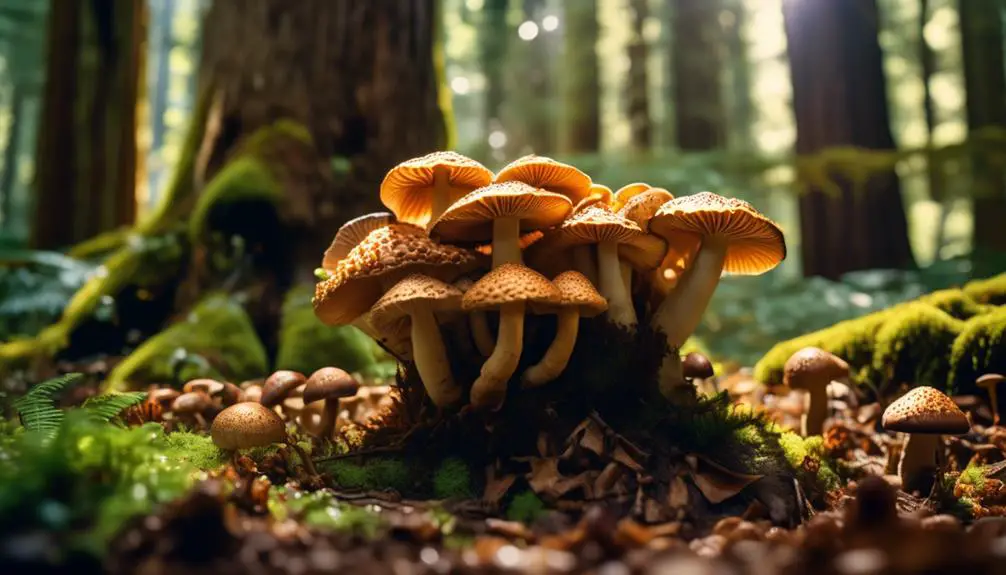
If you’re an adventurous foodie in California, exploring the wilderness for wild mushrooms is a must-do activity. California is home to a wide variety of wild mushrooms, making it a paradise for foragers. From the majestic redwood forests to the picturesque coastal regions, the state offers a diverse range of habitats where these delectable fungi thrive.
When foraging for wild mushrooms in California, it’s crucial to educate yourself about the different species and their characteristics. Some of the most sought-after mushrooms in the state include the chanterelle, morel, porcini, and lobster mushroom. Each of these mushrooms has its own unique flavor profile and culinary applications, making them highly prized by chefs and food enthusiasts alike.
Before setting off on your mushroom foraging adventure, it’s essential to know the rules and regulations in your specific foraging location. Some areas may have restrictions or require permits, so be sure to do your research beforehand.
When searching for wild mushrooms, keep an eye out for specific environmental cues. Mushrooms tend to grow after rainfall, so a wetter season may yield a more abundant harvest. Look for areas with decomposing logs, fallen leaves, and damp forest floors, as these are prime spots for mushroom growth.
Always remember to exercise caution and use expert knowledge to identify edible mushrooms accurately. Mistaking a poisonous mushroom for an edible one can have severe consequences. If you’re unsure about a mushroom’s identification, it’s best to leave it be.
Foraging for wild mushrooms in California is a thrilling and rewarding experience for any food lover. So grab your basket, put on your hiking boots, and embark on a mushroom foraging adventure in the Golden State’s bountiful wilderness.
Medicinal Plants Found in California’s Nature
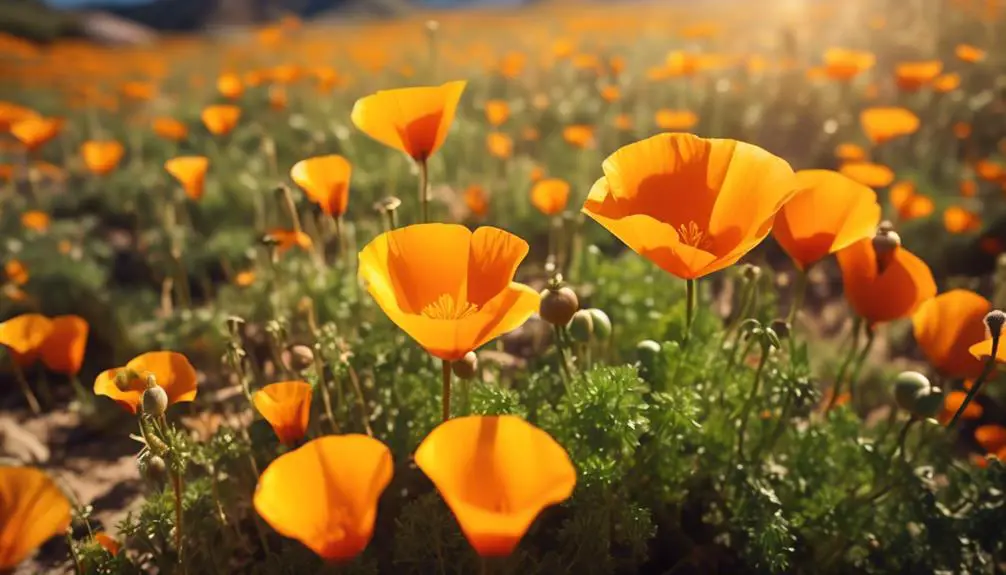
As you continue your exploration of California’s bountiful wilderness, shift your focus from foraging for wild mushrooms to discovering the wide array of medicinal plants found in its nature.
California’s diverse landscape is home to numerous plants with traditional medicinal uses. Monkey Flower, Sow Thistle, Chickweed, Miners Lettuce, and Clover are just a few examples of medicinal plants that can be found in California. These plants have been used for centuries to treat various ailments.
Trees and shrubs such as Toyon, Joshua Tree, California Bay, Manzanita, and California Lilac also offer medicinal properties. Indigenous peoples have long utilized these plants for their healing benefits.
Additionally, roots and tubers like Cattail, Curly Dock, Acorns, Nutgrass, and Horsetail are known for their medicinal properties and have been used in traditional herbal medicine.
Berries and fruits, including Wild Currant, Wild Passion Fruit, Gooseberries, Wild Fig, and Lemonade Berry, also provide medicinal benefits and are commonly used in herbal remedies.
However, it’s important to exercise caution and properly identify these plants, as certain parts may be toxic if not prepared correctly.

